Learn about the traditional Japanese sashiko pattern jūjihanazashi 十字花刺し | Sashiko Pattern
The traditional Japanese sashiko pattern jūjihanazashi 十字花刺し means "letter ten flower stitches."
It consists of crosses, which look exactly like the letter ten in Japanese: 十, hence the name. Some of the crosses are connected, which creates flower-like shapes that are connected with each other.
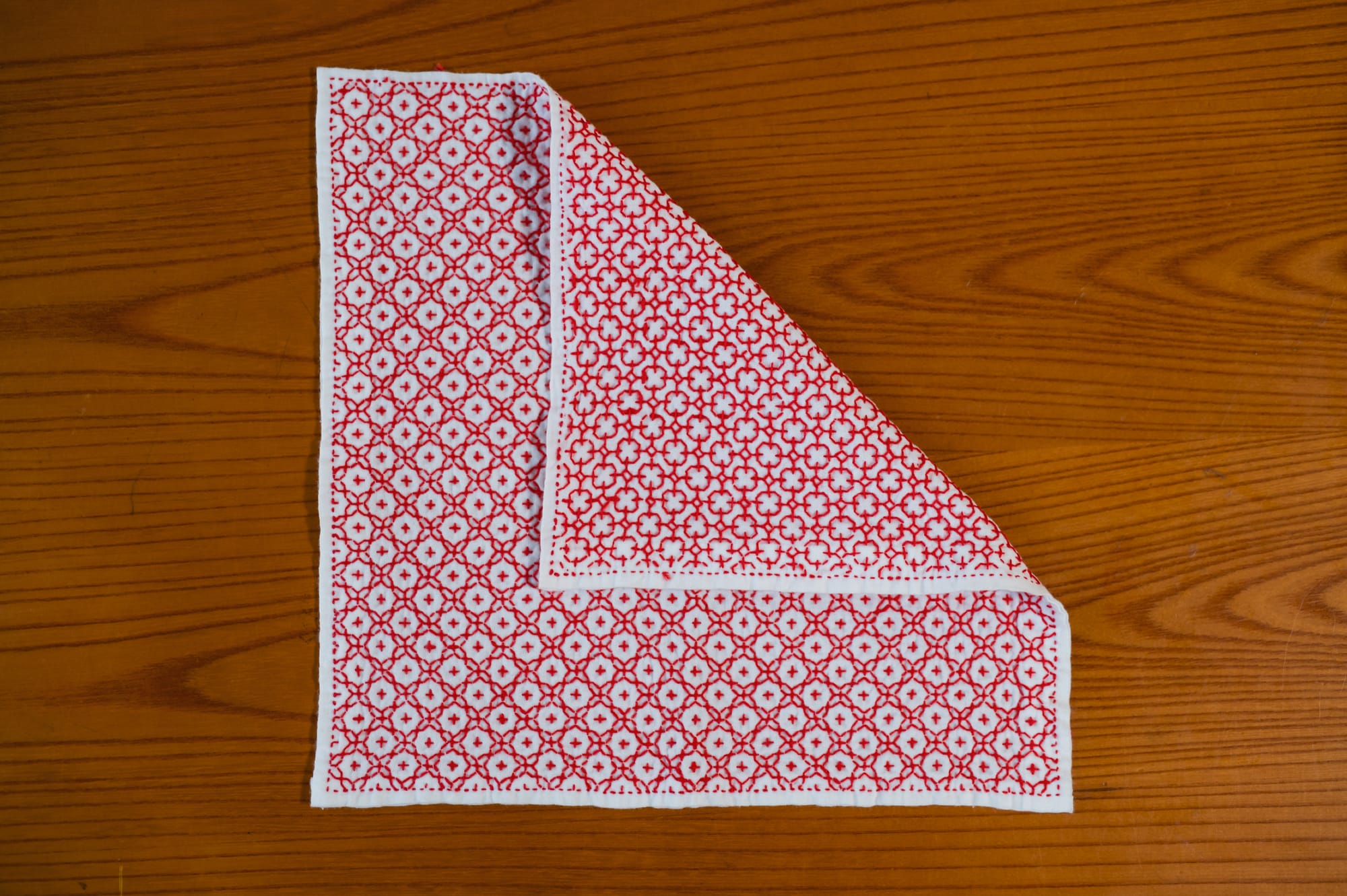
Meaning of the sashiko pattern jūjihanazashi
The ten in Japanese has the meaning of "being whole" or "being enough." It is a lucky number and is often associated with the gods. Source in Japanese
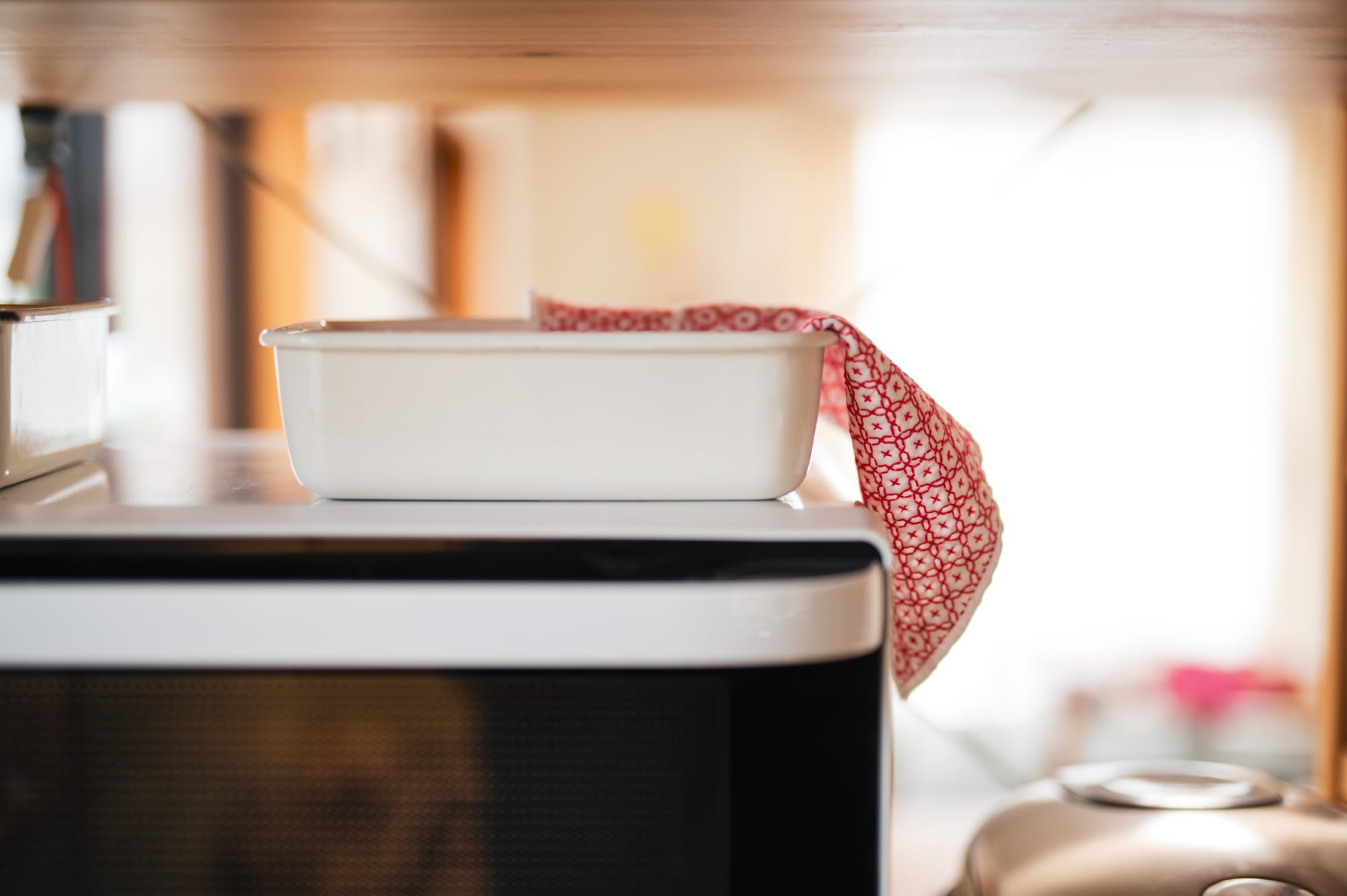
It stands for a plentiful harvest or offspring. You can still occasionally see it embellishing babies' clothes in Japan.
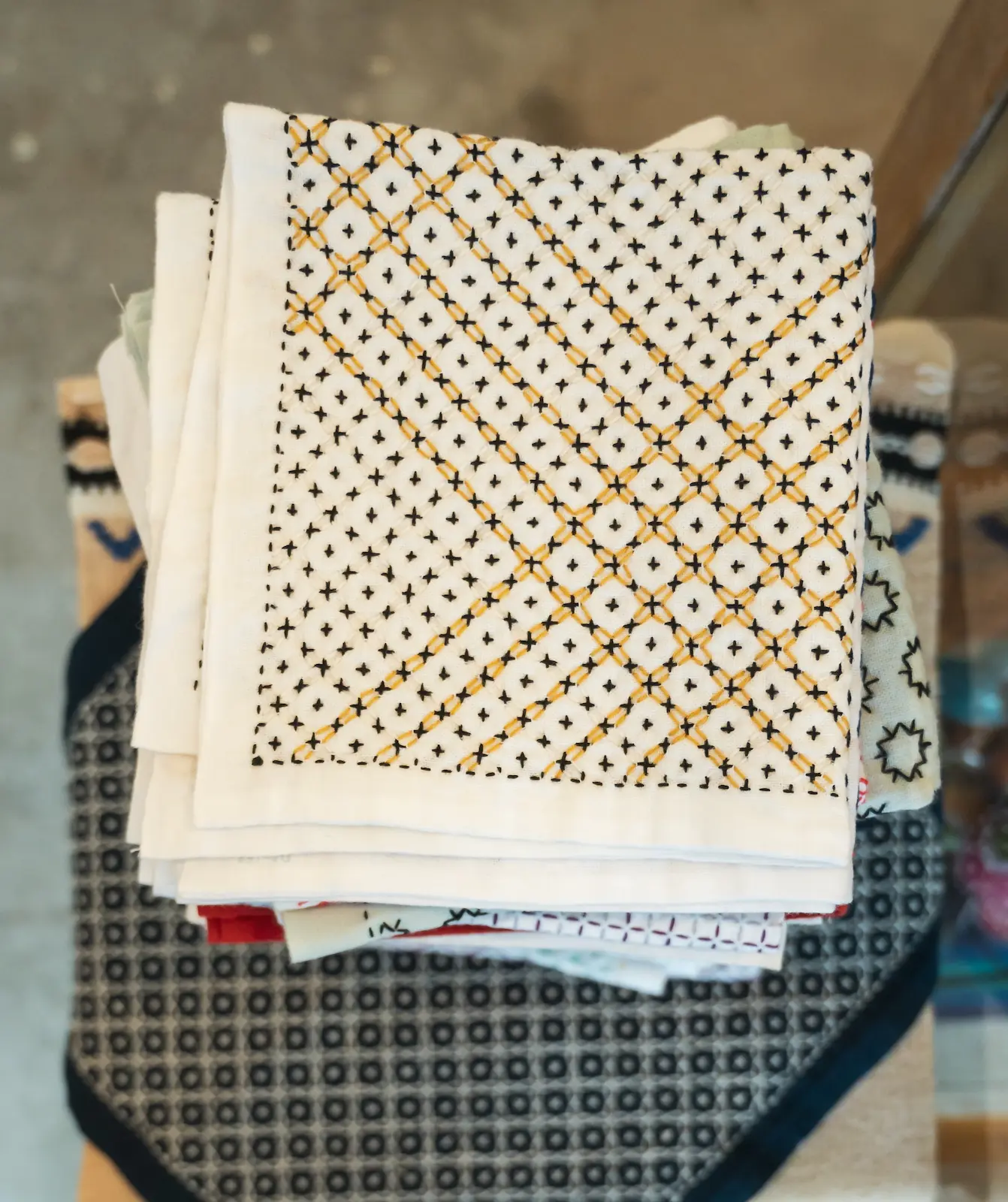
Stitching advice for the sashiko pattern jūjihanazashi
The pattern looks complicated, but if you fill in the vertical and horizontal lines first, you'll see that it consists mainly of crosses.
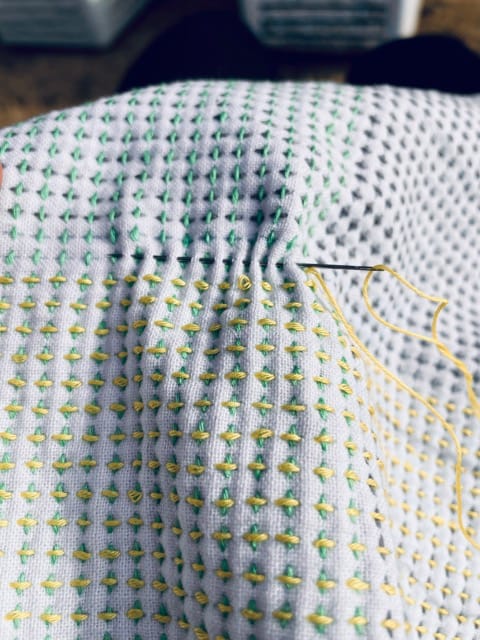
Only when you fill in the diagonal lines you can see the flowers form.
Jūjihanazashi was the first sashiko pattern I've ever done. I am a little proud that I actually finished it. It took FOREVER! But at least it was simple, so I wasn't overwhelmed.
This pattern profits greatly from the traditional sashiko stitching technique. That means you use a palm thimble to load many stitches on the needle at once.
"Many" means around 7-10, but I admit that I always overload because it is so satisfying.
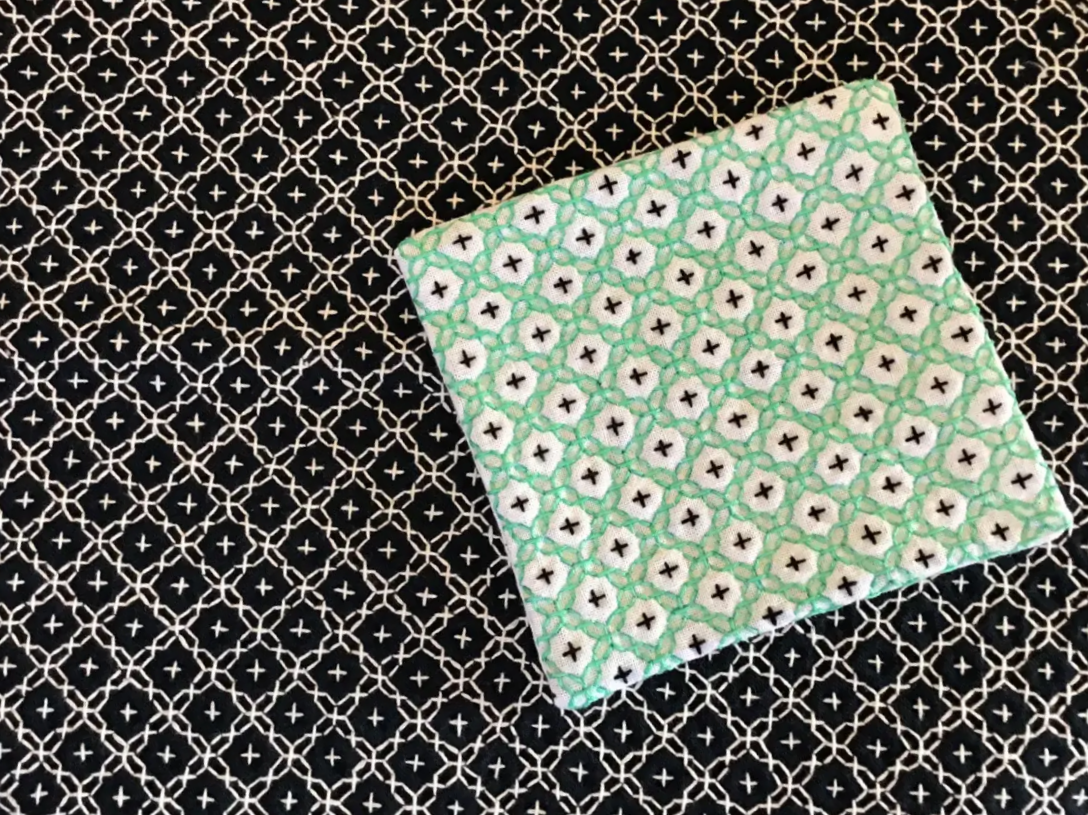
If you don't have one yet, I really recommend you make yourself a palm thimble. You can stitch way faster and reduce strain on your fingers on top of it.
Wanna take another shortcut? There's pre-printed fabric available:
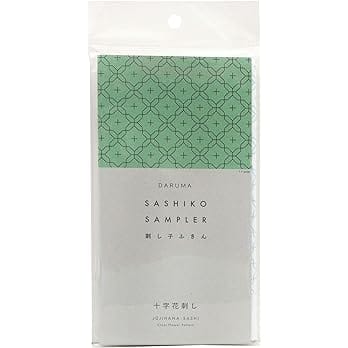
Pre-printed fabric by Daruma
If you want to do sashiko, but you don't want the hassle of drawing the pattern yourself, Daruma offers fabric that has the pattern printed on it, but the lines wash out when you've finished stitching. Super easy!
Leave a comment if you are interested in detailed instructions and I will upload more information as soon as possible.
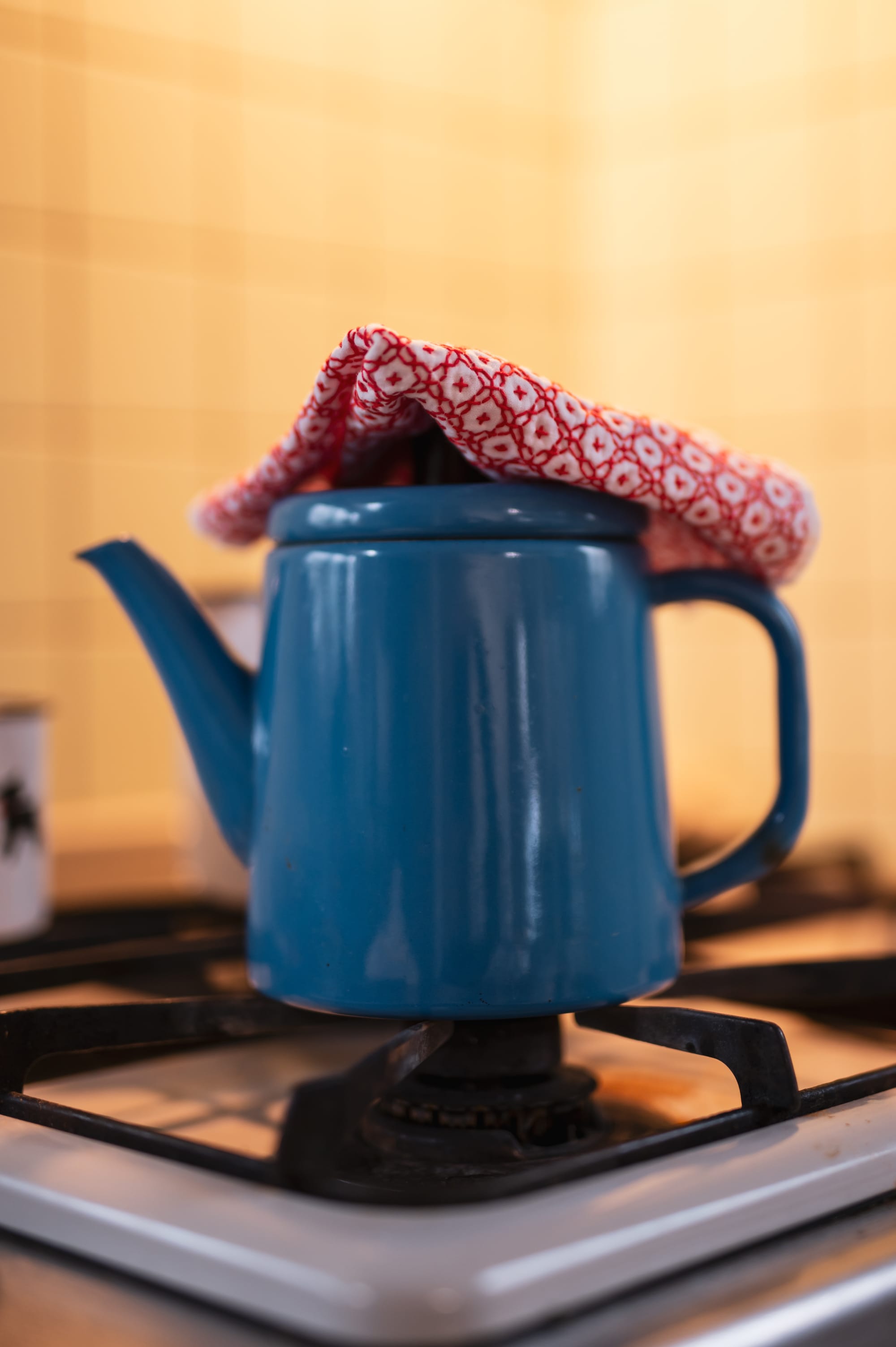


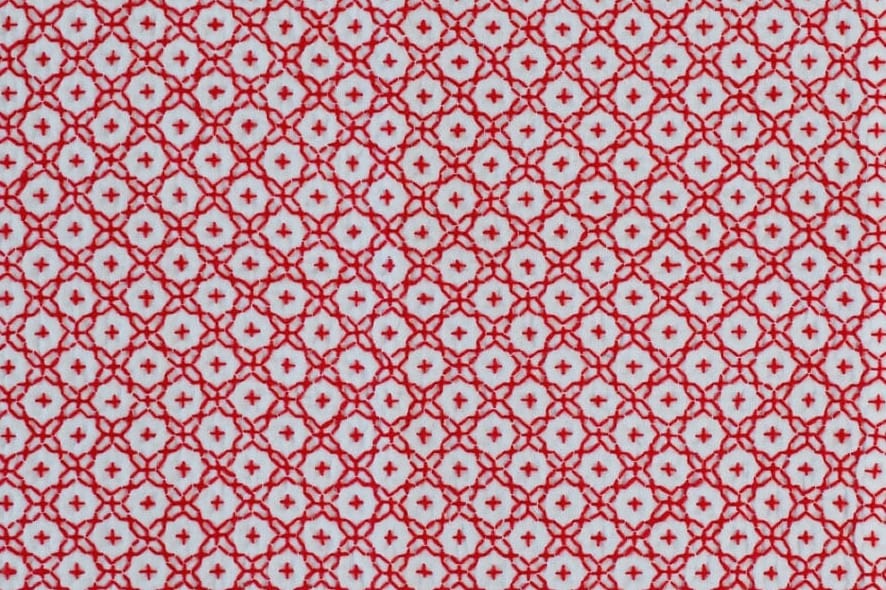
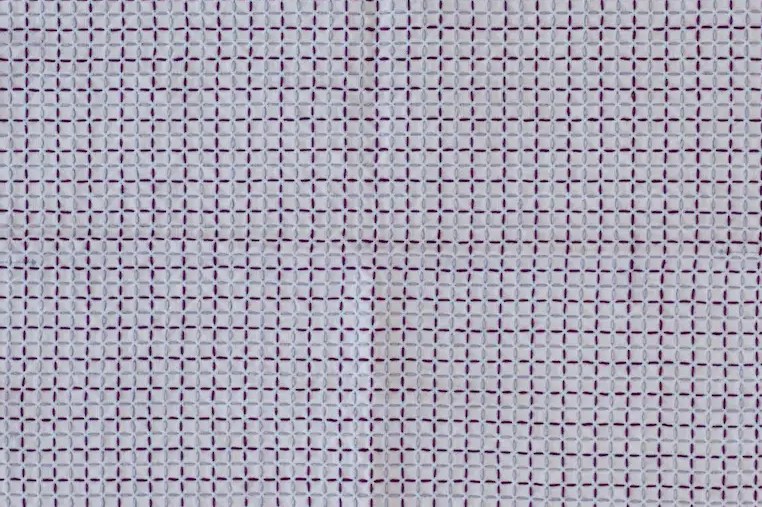
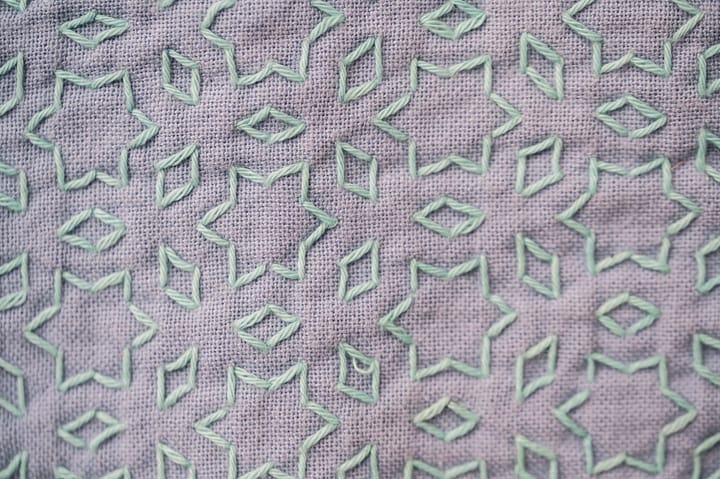
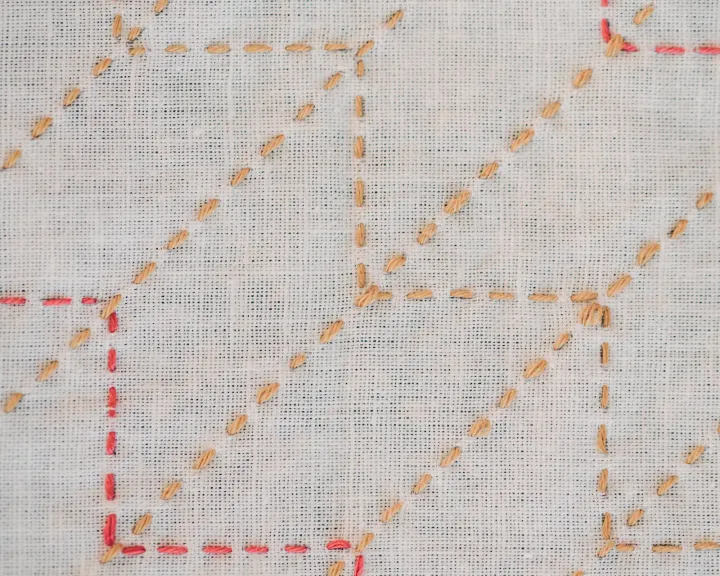
Comments ()